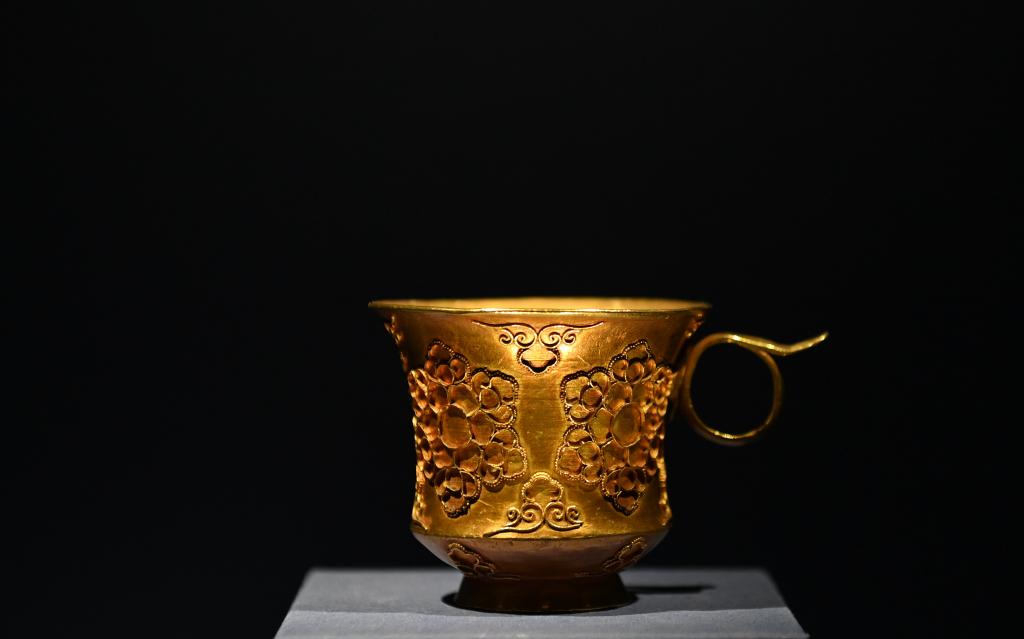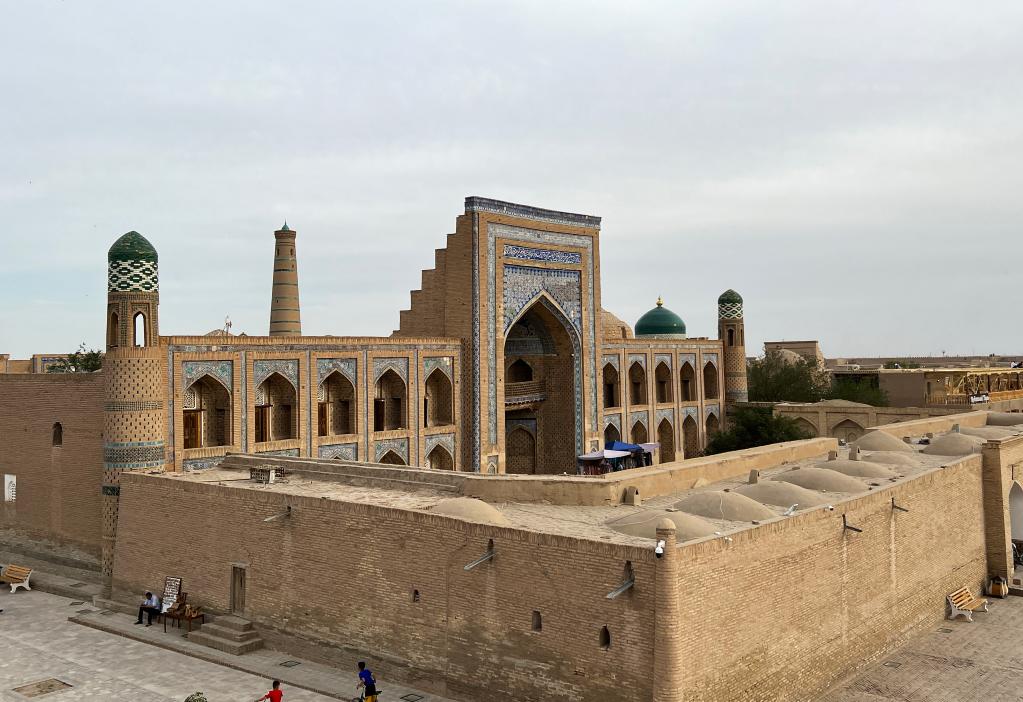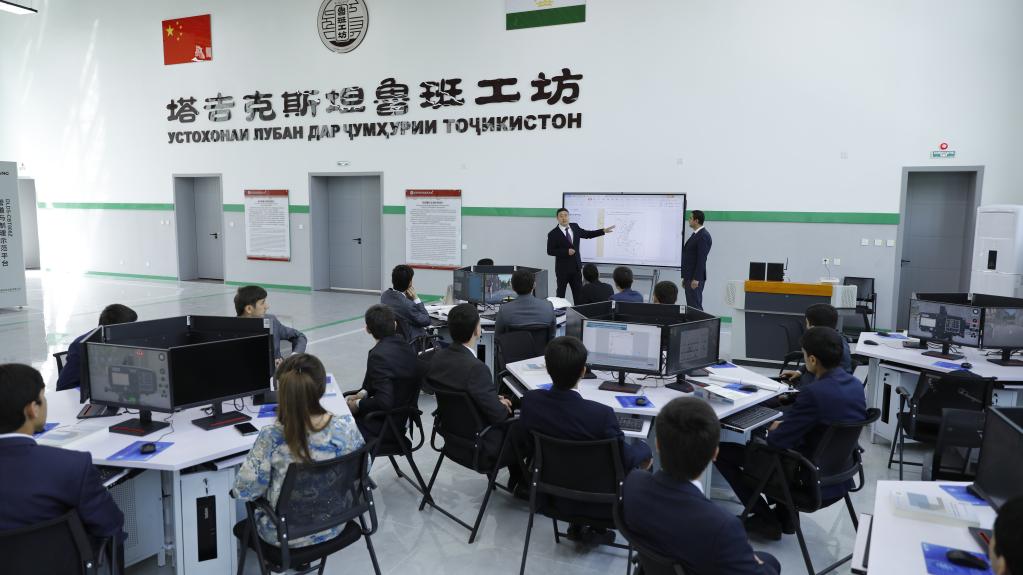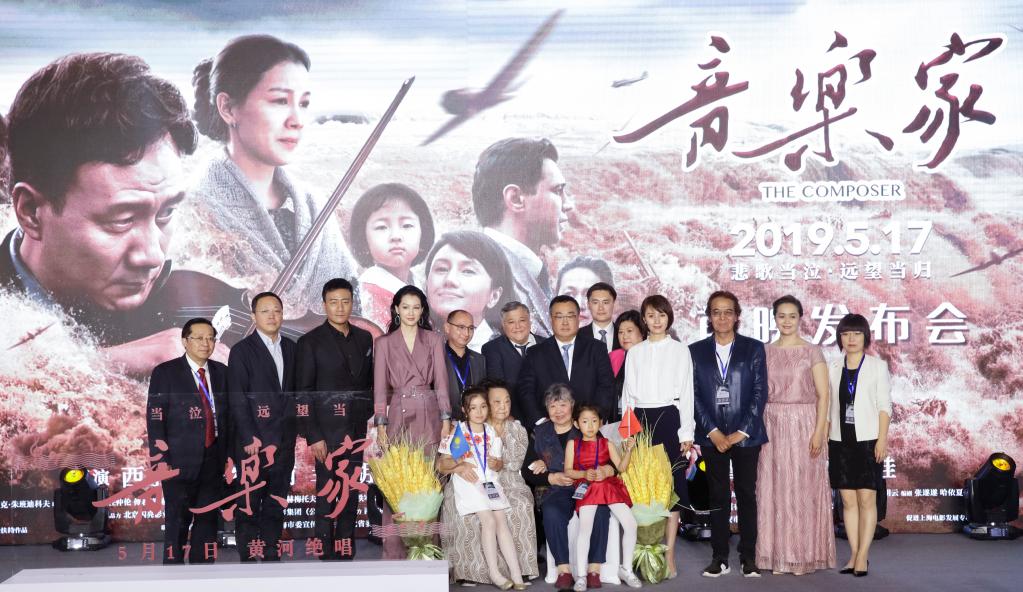China-Central Asia Summit | Special Feature: The Glory of Silk Road in Ancient and Modern Times —— China and Central Asian countries draw a new picture of cultural exchanges.
Xinhua News Agency, Beijing, May 15th Special feature: the glory of Silk Road, ancient and modern — — China and Central Asian countries draw a new picture of cultural exchanges.
Xinhua News Agency reporter Qiu Xia
The Millennium Silk Road is full of vicissitudes. The imprint of the blending of civilizations is fixed in the historical picture scroll and is not erased by time.
More than 2,000 years ago, Zhang Qian sent a mission to the Western Regions to open the ancient Silk Road across the east and west.
For more than 2,000 years, China and Central Asia have exchanged needed goods, learned from each other and helped each other, leaving stories and legends for the history of human civilization.
Civilizations communicate because of diversity, learn from each other because of communication and develop because of mutual learning. Today, China and Central Asian countries have inherited the Silk Road spirit of peaceful cooperation, openness, tolerance, mutual learning and mutual benefit, and are constantly pioneering and innovating in cooperation fields such as archaeology, education, health, tourism, journalism, and local exchanges, so as to jointly build a pluralistic and interactive cultural exchange pattern and make the friendship lasting for thousands of years more deeply rooted in people’s hearts.

This is a gold cup with cloisonne pattern, which was shot in Shaanxi History Museum on May 11th. In the Tang Dynasty, except for some objects with handles, they came directly from Sogdian in Central Asia, and some of them belonged to the works imitated by Sogdian in the Tang Dynasty. These objects are precious material evidence for the exchange and mutual learning between eastern and western civilizations through the Silk Road. Xinhua News Agency reporter Li Yibo photo
The ancient city of Silk Road has a new look.
"The land is fertile, the crops are planted, the trees are lush, the flowers and fruits are luxuriant, and there are many good horses." More than 1,300 years ago, when Xuanzang, a monk in the Tang Dynasty in China, passed through Samarkand, a historic city in Central Asia, he recorded fascinating rich and beautiful scenery.
Samarkand, Tashkent, Bukhara … … Ancient cities, like pearls scattered along the Silk Road, connect the historical memories of friendly exchanges between China and Central Asia.
However, some ancient cities are in disrepair and need to be protected urgently; Some historical sites are lost in the dust of history, waiting for the moment when the "mystery veil" is unveiled.
In September 2022, during his state visit to Uzbekistan, the Chairman of the Supreme Leader prepared a national gift for President Mirziyoev — — Miniature model of historical and cultural relics of the ancient city of Shiva restored by China and Ukraine. On the eve of the visit, the Chairman of the Supreme Leader published a signed article in the Uzbek media, in which he specifically mentioned: "The protection and restoration project of historical sites in the ancient city of Shiva, which I started when I visited Samarkand in 2013, has been successfully completed, making the ancient city of Shiva even more dazzling."
"In the process of restoration, China experts and scholars live in Shiva, and discuss how to carry out their work better every day, and communicate and cooperate directly with local experts and people." Ma Chalib Abdulaev, deputy director of the Scientific Development Promotion Center of the Academy of Sciences of Uzbekistan, said that the restoration work is very difficult. While using modern technology, China experts pay attention to the use of local traditional crafts and materials, and always strive to preserve the original features of the ancient city.
"China experts always work very hard and treat the ruins of the ancient city of Shiva with care. In the process of working with them, I feel the sincerity of China experts and their cherished attitude towards Uzbek culture. I am very grateful and respect China experts. " Cormier Olimov, a local resident who participated in the restoration of the ancient city of Shiva, said.

This is the ancient city of Shiva, Uzbekistan, which was filmed on April 29th. Xinhua news agency
From the ruins of Mingtiepei ancient city in Uzbekistan to the ruins of Lachart ancient city in Isei Crate, Kazakhstan, and then to the ruins of Buddhist temple on the west side of Honghe ancient city in Kyrgyzstan, China and archaeologists from Central Asian countries have made concerted efforts to make the relics that witnessed the blending of civilizations reappear in the world through excavation results.
In June 2014, the Silk Road: Chang ‘an — The road network of Tianshan Corridor was successfully listed in the World Heritage List. The Millennium Silk Road, connecting points into a line and connecting lines into a network, is a powerful force for China and Central Asian countries to work together to protect cultural heritage.
Spring breeze melts rain and moistens peaches and plums
With the "Chinese fever" and "China culture fever" heating up in Central Asian countries, Confucius Institutes and Confucius Classrooms have long been "full of peaches and plums". In recent years, as a "rising star", Luban Workshop is building a new platform for vocational education exchanges and cooperation between China and Central Asian countries.
The first Luban workshop in Central Asia — — In Luban Workshop, Tajikistan, teachers from China and Tajikistan are conducting exchanges and discussions on thermal energy specialty. Unexpected challenges have made them difficult: there are differences in related formulas and numbers between the two countries. Even if the Chinese teacher speaks a sentence and translates it, the Tajik teacher still can’t understand it. After repeated discussions, teachers from both sides finally found an effective communication method — — Explain theoretical calculation in practical operation.
Luban Workshop in Tajikistan was jointly built by Tianjin Vocational College of Urban Construction Management and Tajikistan University of Technology, with urban thermal energy application technology and engineering survey technology as the co-construction majors. It has two teaching areas, namely, green energy training center and intelligent surveying and mapping training center, equipped with bilingual teaching materials, training equipment and information-based teaching resources.
"In Luban Workshop, we can learn to operate advanced equipment, which greatly improves our theoretical and practical knowledge." Saidov, a surveying and mapping student at Tajikistan University of Technology, said.

On April 12th, in the Luban Workshop in Dushanbe, the capital of Tajikistan, Wu Zhengpeng (first from the back row), a teacher from Tianjin Vocational College of Urban Construction Management, explained the practical knowledge of surveying and mapping to students. Luban Workshop in Tajikistan is the first Luban Workshop in Central Asia. Xinhua News Agency (photo by Ospanov)
Shahriyol Sadurozoda, president of Tajikistan Luban Workshop and vice president of Tajikistan Technical University, said that thanks to the joint construction of the Belt and Road, with the joint efforts of the leaders of the two countries, Luban Workshop settled in Tajikistan, which promoted civilized exchanges and educational cooperation and became an example of friendly relations between Tajikistan and China.
In recent years, the road of educational cooperation between China and Central Asian countries has become wider and wider, the number of international students sent to each other has continued to increase, cooperation and exchanges between universities have become increasingly close, and the joint school-running model has been continuously expanded … … In January 2022, at the video summit of the 30th anniversary of the establishment of diplomatic relations between China and five Central Asian countries, China announced that it planned to provide 1,200 China government scholarships to five Central Asian countries in the next five years, giving priority to the establishment of Confucius Institutes and Confucius Classrooms in Central Asian countries.
Intersection across time and space centers
In Almaty, the largest city in Kazakhstan, there is a street named after China people’s musician Xian Xinghai, and there is also a street named after Kazakhstan musician Bahad Jean Baikadamov not far away. Two parallel streets record the friendship between two musicians during the war.
In 1940, Xian Xinghai was sent by the Central Committee of the Communist Party of China from Yan ‘an to Moscow to post-produce and score the documentary Yan ‘an and the Eighth Route Army. After the outbreak of the Great Patriotic War of the Soviet Union in 1941, film production came to a standstill. In 1942, Xian Xinghai moved to Almaty. Unaccompanied, poor and sick, Xian Xinghai got selfless help from the Baikadamov family. In Almaty, Xian Xinghai composed famous music works such as National Liberation, and based on the deeds of Kazakh national heroes, he created the symphonic poem Oman Geld, which inspired people to fight against fascism.
Through time, the touching stories of the two musicians have been passed down from generation to generation. Erect monuments, hold concerts, publish books and co-produce films … … Their friendship has been celebrated and remembered, and it has become a precious spiritual wealth in people’s hearts.

On May 13th, 2019, China and Kazakstan co-produced the feature film "Musician" and held its premiere conference and ceremony in Beijing. The film tells the story of China musician Xian Xinghai who moved to Almaty during World War II and was rescued by Kazakh musicians in a cruel environment. The picture shows the film’s creative staff and guests taking a group photo at the premiere conference. Xinhua News Agency reporter Shen Bohan photo
Similarly, taking art as a bridge, in 2021, the animated short film "Song of a New China" created by Turkmenistan girl Chris in China was launched, which became an "explosion" of network positive energy. The short film of nearly 8 minutes vividly shows the birth process of March of the Volunteers and tells the story of its going from China to the world.
During the creative period, Chris and friends from China visited the National Anthem Exhibition Hall, Nie Er’s former residence, Nie Er Music Square, EMI Xiaohonglou and other places, collected a lot of written materials and remake more than a thousand old photos, and finally created a short film in the form of freeze-motion animation. "I am very happy to tell the story of the national anthem of New China in an innovative and interesting way. This story deserves to be understood by more people." Chris hopes to shoot more films in the future and show the world a real China.
In recent years, more and more young people from Central Asian countries have become attached to China and become ambassadors of friendship — — Ruslan, who donated panda blood, Ken Jebeyev, who fought against the epidemic several times, and Ma Wenxuan & HELIP, who lamented that "I am a foreigner, but not an outsider"; …
Navai, a famous Uzbek poet, said, "There is nothing better than living in friendship." Friends get closer, neighbors get closer. During the frequent visits, China and the people of Central Asian countries have closer hearts and deeper feelings, and will continue to jointly paint a beautiful picture of knowing each other, dating each other and interacting with each other. (Participating in reporters: Zhang Jiye, Li Ao)